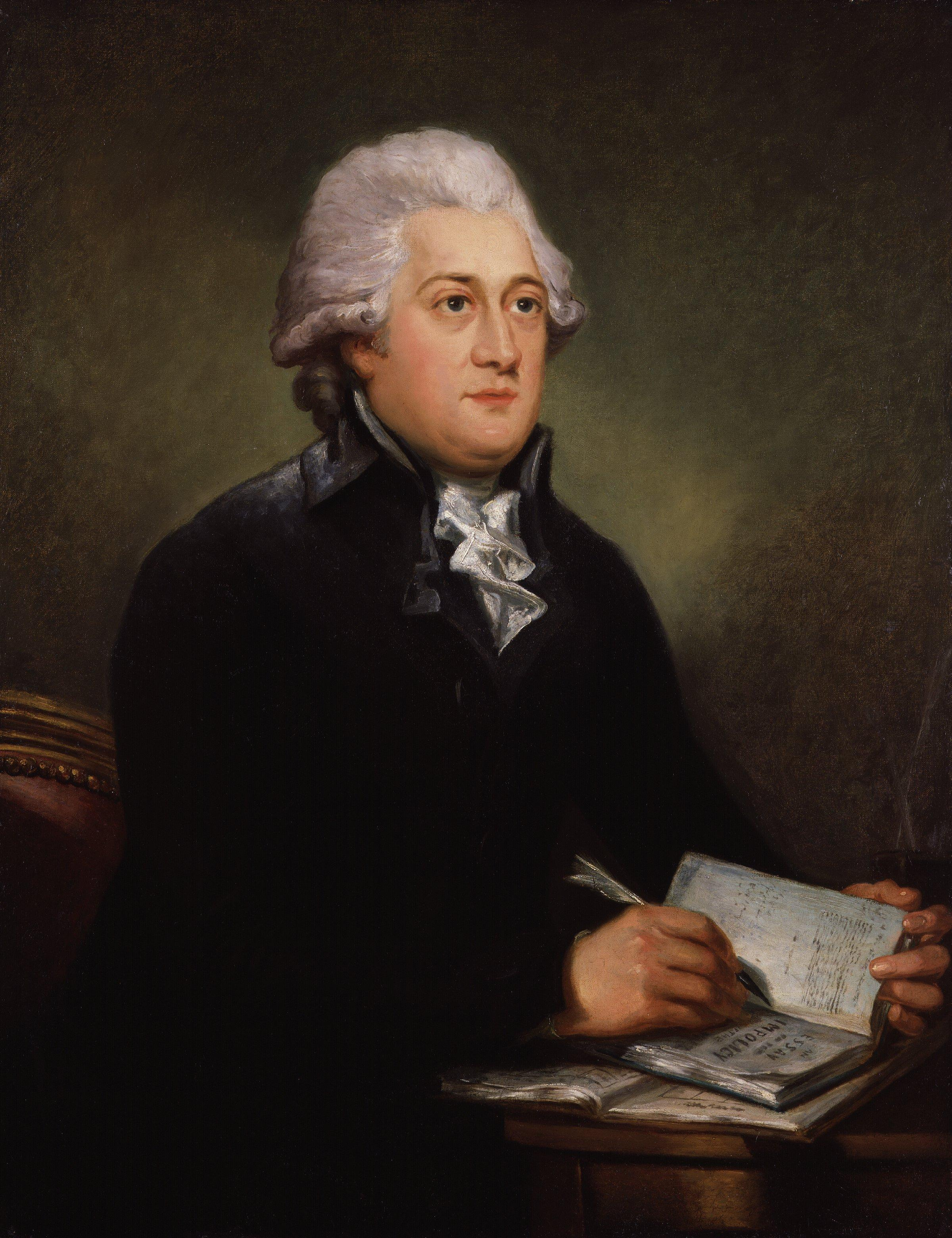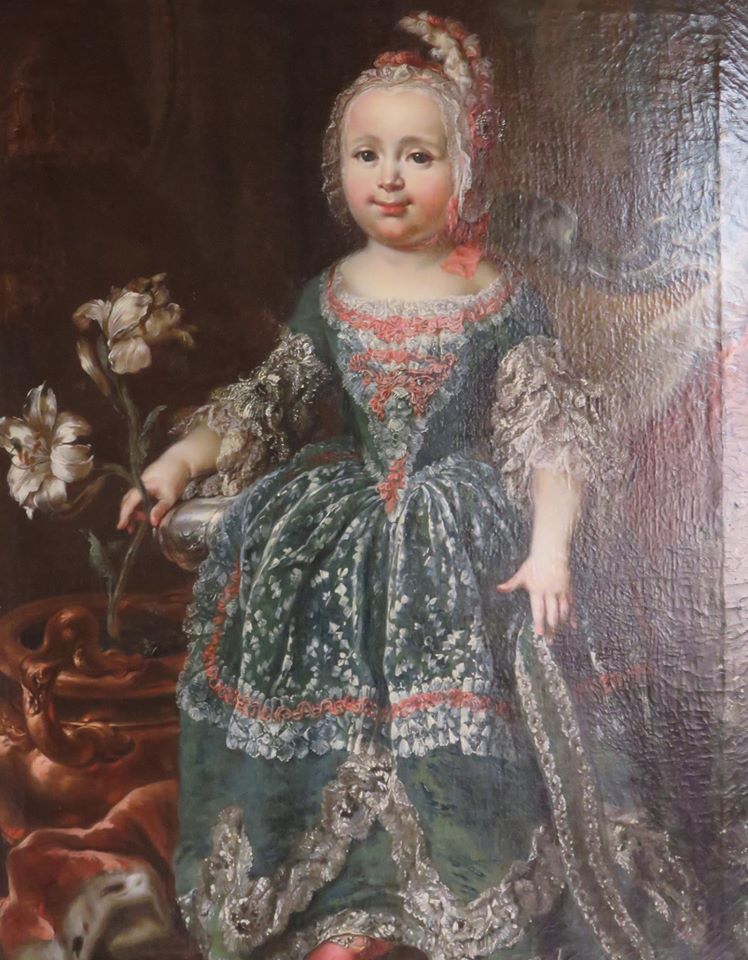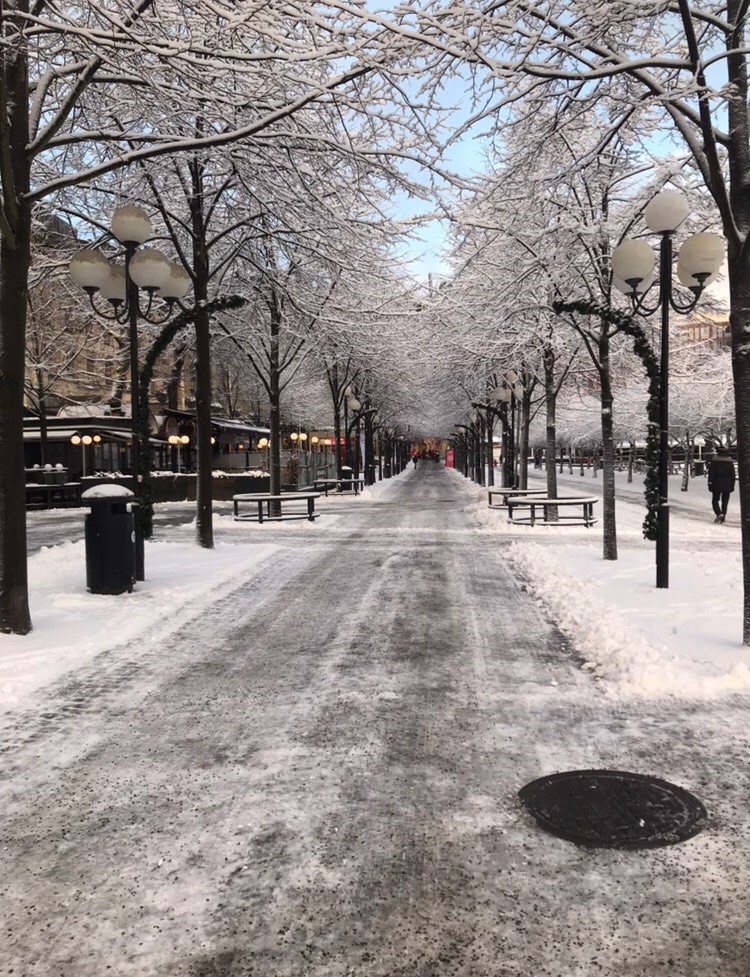|
Hedwig Elizabeth Charlotte Of Holstein-Gottorp
Hedwig Elisabeth Charlotte of Holstein-Gottorp ( sv, Hedvig Elisabet Charlotta; 22 March 1759 – 20 June 1818) was Queen of Sweden and Norway as the consort of King Charles XIII and II. She was also a famed diarist, memoirist and wit. She is known by her full pen name (above), though her official name as queen was Charlotte (''Charlotta''). She was born in Eutin the daughter of Duke Frederick August I of Holstein-Gottorp and Princess Ulrike Friederike Wilhelmine of Hesse-Kassel. She grew up in Eutin and married her cousin Charles, Duke of Södermanland, in Stockholm on 7 July 1774 when she was fifteen years old. The marriage was arranged by King Gustav III to provide the throne of Sweden with an heir. The King had not consummated his marriage and had decided to give the task of providing an heir to the throne to his brother. Royal Duchess Prince Charles saw her for the first time in Eutin in 1770 and remarked that she was pretty. The marriage was suggested in 1772, and t ... [...More Info...] [...Related Items...] OR: [Wikipedia] [Google] [Baidu] |
Carl Frederik Von Breda
Carl Frederik von Breda (16 August 1759 – 1 December 1818) was a Swedish painter who studied in and spent much of his career in Britain before becoming painter to the Swedish court. He was born in Stockholm in 1759, and moved to Britain where he was a student of Joshua Reynolds. Breda specialized in painting portraits and was called "the van Dyck of Sweden". He returned to Sweden 1796 where he became professor at the Academy of Arts, a popular portraitist, and a court painter. Breda married at age 22 and his son, Johan Fredrik, was also a painter, who studied under his father. Breda died in Stockholm in 1818. Breda painted James Watt. Early life Breda's great-grandfather Pieter emigrated to Stockholm around the year 1670 from the Netherlands. The "von Breda" family name seems to indicate a connection with the city of Breda. ''Von'' is not a Dutch preposition, but in the Nordic countries, this originally German preposition has occasionally been used as a part of names of en ... [...More Info...] [...Related Items...] OR: [Wikipedia] [Google] [Baidu] |
Memoir
A memoir (; , ) is any nonfiction narrative writing based in the author's personal memories. The assertions made in the work are thus understood to be factual. While memoir has historically been defined as a subcategory of biography or autobiography since the late 20th century, the genre is differentiated in form, presenting a narrowed focus. A biography or autobiography tells the story "of a life", while a memoir often tells the story of a particular event or time, such as touchstone moments and turning points from the author's life. The author of a memoir may be referred to as a memoirist or a memorialist. Early memoirs Memoirs have been written since the ancient times, as shown by Julius Caesar's ''Commentarii de Bello Gallico'', also known as ''Commentaries on the Gallic Wars''. In the work, Caesar describes the battles that took place during the nine years that he spent fighting local armies in the Gallic Wars. His second memoir, ''Commentarii de Bello Civili'' (or ''Commen ... [...More Info...] [...Related Items...] OR: [Wikipedia] [Google] [Baidu] |
Sophia Albertina, Abbess Of Quedlinburg
Princess Sophia Albertina of Sweden (''Sophia Maria Lovisa Fredrika Albertina''; 8 October 1753 – 17 March 1829) was the last Princess-Abbess of Quedlinburg Abbey, and as such reigned as vassal monarch of the Holy Roman Empire. Sophia Albertina was the daughter of King Adolf Frederick of Sweden and Louisa Ulrika of Prussia. She was thus a princess of Sweden, a princess of Holstein-Gottorp and a sister to Gustav III of Sweden. She was a member of the Accademia di San Luca. When her brother Charles XIII of Sweden and the rest of the royal family also became Norwegian royalty in 1814, that did not include Sophia Albertina who then officially was called ''Royal Princess'' (of no country). She was given her two names as namesake of her two grandmothers: the Prussian Queen Sophia Dorothea of Hanover and Margravine Albertina Frederica of Baden-Durlach. Biography At the Swedish court Sophia Albertina was tutored under the supervision of Baroness Ulrica Schönström, Baroness Kris ... [...More Info...] [...Related Items...] OR: [Wikipedia] [Google] [Baidu] |
Amateur Theatre
Amateur theatre, also known as amateur dramatics, is theatre performed by amateur actors and singers. Amateur theatre groups may stage plays, revues, musicals, light opera, pantomime or variety shows, and do so for the social activity as well as for aesthetic values. Productions may take place in venues ranging from the open air, community centres, or schools to independent or major professional theatres. Amateur theatre is distinct from the professional or community theatre because performers are usually not paid. Amateur actors are not typically members of actors' unions. Definition Opinions vary on how to define "amateur" in relation to theatre. Technically speaking, an "amateur" is anyone who does not accept, or is not offered, money for their services. One interpretation of this is: "One lacking the skill of a professional, as in an art". Another is: "A person who engages in an art, science, study, or athletic activity as a pastime rather than as a profession". An amateur a ... [...More Info...] [...Related Items...] OR: [Wikipedia] [Google] [Baidu] |
Sophia Magdalena Of Denmark
Sophia Magdalena of Denmark ( da, Sophie Magdalene; sv, Sofia Magdalena; 3 July 1746 – 21 August 1813) was Crown Princess of Sweden by her marriage to Gustav III. She was liked by many in the Caps party, believing she was a symbol of virtue and religion. In 1771, Sophia's husband ascended to the throne and became King of Sweden, making Sophia Queen of Sweden. Their coronation was on 29 May 1772. Early life Princess Sophie Magdalene was born on 3 July 1746 at her parents' residence Charlottenborg Palace, located at the large square, Kongens Nytorv, in central Copenhagen. She was the second child and first daughter of Crown Prince Frederick of Denmark and his first consort, the former Princess Louise of Great Britain, and was named for her grandmother, Queen Sophie Magdalene. She received her own royal household at birth. Just one month after her birth, her grandfather King Christian VI died, and Princess Sophie Magdalene's father ascended the throne as King Frederick ... [...More Info...] [...Related Items...] OR: [Wikipedia] [Google] [Baidu] |
Coronets Of Sophia Albertina Of Sweden & Charlotte Of Sweden 2014
A coronet is a small crown consisting of ornaments fixed on a metal ring. A coronet differs from other kinds of crowns in that a coronet never has arches, and from a tiara in that a coronet completely encircles the head, while a tiara does not. In other languages, this distinction is not made as usually the same word for ''crown'' is used irrespective of rank (german: Krone, nl, Kroon, sv, Krona, french: Couronne, etc.) Today, its main use is not as a headgear (indeed, many people entitled to a coronet never have a physical one created), but as a rank symbol in heraldry, adorning a coat of arms. Etymology The word stems from the Old French ''coronete'', a diminutive of ''co(u)ronne'' ('crown'), itself from the Latin ''corona'' (also 'wreath') and from the Ancient Greek ''κορώνη'' (''korōnē''; 'garland' or 'wreath'). Traditionally, such headgear is used by nobles and by princes and princesses in their coats of arms, rather than by monarchs, for whom the word ' ... [...More Info...] [...Related Items...] OR: [Wikipedia] [Google] [Baidu] |
Hedvig Elisabeth Charlotta Av Sveriges Brudklänning
Hedvig is a given name. Notable people with the name include: People *Hedvig Catharina De la Gardie (1732–1800), Swedish noblewoman of French descent *Hedvig Catharina Lilje (1695–1745), Swedish noblewoman, salonist and informal amateur-politician *Hedvig Charlotta Nordenflycht (1718–1763), Swedish poet, feminist and salon-hostess *Hedvig Eleonora Church, church in central Stockholm, Sweden * Hedvig Eleonora of Holstein-Gottorp (1636–1715), the queen consort of King Charles X of Sweden and queen mother of King Charles XI *Hedvig Eleonora von Fersen (1753–1792), Swedish noblewoman *Hedvig Elisabeth Charlotte of Holstein-Gottorp (1759–1818), the queen consort of Charles XIII of Sweden, famed diarist, memoirist and wit *Hedvig Hricak (born 1946), Croatian American radiologist *Hedvig Karakas (born 1990), Hungarian judoka *Hedvig Lindahl (born 1983), Swedish soccer goalkeeper *Hedvig Malina, ethnic Hungarian student from Slovakia, physically assaulted in a hate crime inciden ... [...More Info...] [...Related Items...] OR: [Wikipedia] [Google] [Baidu] |
Roslin Alexander - Hedvig Elisabeth Charlotta Av Holstein-Gottorp2
Roslin may refer to: Scotland *Roslin, Midlothian (sometimes spelt ''Rosslyn'' or ''Roslyn''), a village in Midlothian, south of Edinburgh, Scotland **Rosslyn Chapel *Roslin Castle *Roslin Institute, where Dolly the Sheep was cloned *Battle of Roslin, 1303 *Barony of Roslin United States *Roslin House, the Spanish House of Haverford College *Roslin Art Gallery People *Alexander Roslin (1718–1793), Swedish painter *Gaby Roslin (born 1964), British television presenter *Helisaeus Roeslin (1544–1616), German physician, astrologer and astronomer, 1544–1616 *Toros Roslin, 13th-century Armenian Byzantine-style manuscript illuminator (active 1256–1268) Characters *Laura Roslin Laura Roslin is a fictional character in the re-imagined ''Battlestar Galactica'' series, portrayed by Mary McDonnell. She is the President of the Twelve Colonies of Kobol and is one of the primary characters in the show. Character biography ..., a main character from ''Battlestar Galactica'' * R ... [...More Info...] [...Related Items...] OR: [Wikipedia] [Google] [Baidu] |
Kungsträdgården
Kungsträdgården ( Swedish for "King's Garden") is a park in central Stockholm, Sweden. It is colloquially known as ''Kungsan''. The park's central location and its outdoor cafés makes it one of the most popular hangouts and meeting places in Stockholm. It also hosts open-air concerts and events in summer, while offering an ice rink, Opening hours and some more information. during winters. There is also a number of cafés, art galleries and restaurants; for example Galleri Doktor Glas, a name taken from the novel '' Doctor Glas'' by Hjalmar Söderberg published in 1905. The park is divided into four distinct spaces (south to north): (1) Square of Charles XII; (2) Molin's Fountain; (3); Square of Charles XIII and (4) "Fountain of Wolodarski" (which does not have an official name). The park is administered and events in it organized by the Stockholm Chamber of Commerce. Overview A number of Stockholm landmarks are found around the perimeter of Kungsträdgården: Sout ... [...More Info...] [...Related Items...] OR: [Wikipedia] [Google] [Baidu] |
Masquerade Ball
A masquerade ball (or ''bal masqué'') is an event in which many participants attend in costume wearing a mask. (Compare the word " masque"—a formal written and sung court pageant.) Less formal " costume parties" may be a descendant of this tradition. A masquerade ball usually encompasses music and dancing. These nighttime events are used for entertainment and celebrations. History Masquerade balls were a feature of the Carnival season in the 15th century, and involved increasingly elaborate allegorical Royal Entries, pageants, and triumphal processions celebrating marriages and other dynastic events of late medieval court life. The " Bal des Ardents" (''"Burning Men's Ball"'') was held by Charles VI of France, and intended as a ''Bal des sauvages'' (''"Wild Men's Ball"''), a form of costumed ball (''morisco''). It took place in celebration of the marriage of a lady-in-waiting of Charles VI of France's queen in Paris on January 28, 1393. The King and five courtiers ... [...More Info...] [...Related Items...] OR: [Wikipedia] [Google] [Baidu] |
Gondola
The gondola (, ; vec, góndoła ) is a traditional, flat-bottomed Venetian rowing boat, well suited to the conditions of the Venetian lagoon. It is typically propelled by a gondolier, who uses a rowing oar, which is not fastened to the hull, in a sculling manner and also acts as the rudder. The uniqueness of the gondola includes its being asymmetrical along the length making the single-oar propulsion more efficient. For centuries, the gondola was a major means of transportation and the most common watercraft within Venice. In modern times, the boats still do have a role in public transport in the city, serving as ''traghetti'' (small ferries) over the Grand Canal operated by two oarsmen. Various types of gondola boats are also used in special regattas (rowing races) held amongst gondoliers. Their primary role today, however, is to carry tourists on rides at fixed rates. There are approximately 400 licensed gondoliers in Venice and a similar number of boats, down from the t ... [...More Info...] [...Related Items...] OR: [Wikipedia] [Google] [Baidu] |




.jpg)




